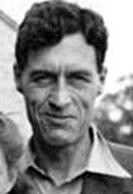Patrick Blackett, Baron Blackett
|
The Right Honourable The Lord Blackett OM CH PRS |
|
|---|---|

Patrick Blackett, ca. 1950
|
|
| Born | Patrick Maynard Stuart Blackett 18 November 1897 London, England |
| Died | 13 July 1974 (aged 76) London, England |
| Nationality | United Kingdom |
| Fields | Physics |
| Institutions | |
| Alma mater | |
| Academic advisors | Ernest Rutherford |
| Doctoral students | |
| Other notable students | Ishrat Hussain Usmani Imdadul Haque Khan |
| Known for | |
| Notable awards |
|
Patrick Maynard Stuart Blackett, Baron Blackett OM CH PRS (18 November 1897 – 13 July 1974) was an English experimental physicist known for his work on cloud chambers, cosmic rays, and paleomagnetism, winning the Nobel Prize for Physics in 1948. He also made a major contribution in World War II advising on military strategy and developing operational research. His left-wing views saw an outlet in third world development and in influencing policy in the Labour Government of the 1960s.
Blackett was born in Kensington, London, the son of Arthur Stuart Blackett, a stockbroker, and his wife Caroline Maynard. His younger sister was the psychoanalyst Marion Milner. His paternal grandfather Rev. Henry Blackett, brother of Edmund Blacket the Australian architect, was for many years Vicar of Croydon. His maternal grandfather Charles Maynard was an officer in the Royal Artillery at the time of the Indian Mutiny. The Blackett family lived successively at Kensington, Kenley, Woking and Guildford, Surrey, where Blackett went to preparatory school. His main hobbies were model aeroplanes and crystal radio. When he went for interview for entrance to the Royal Naval College, Osborne, Isle of Wight, Charles Rolls had completed his cross-channel flight the previous day and Blackett who had tracked the flight on his crystal set was able to expound lengthily on the subject. He was accepted and spent two years there before moving on to Dartmouth where he was "usually head of his class".
...
Wikipedia
